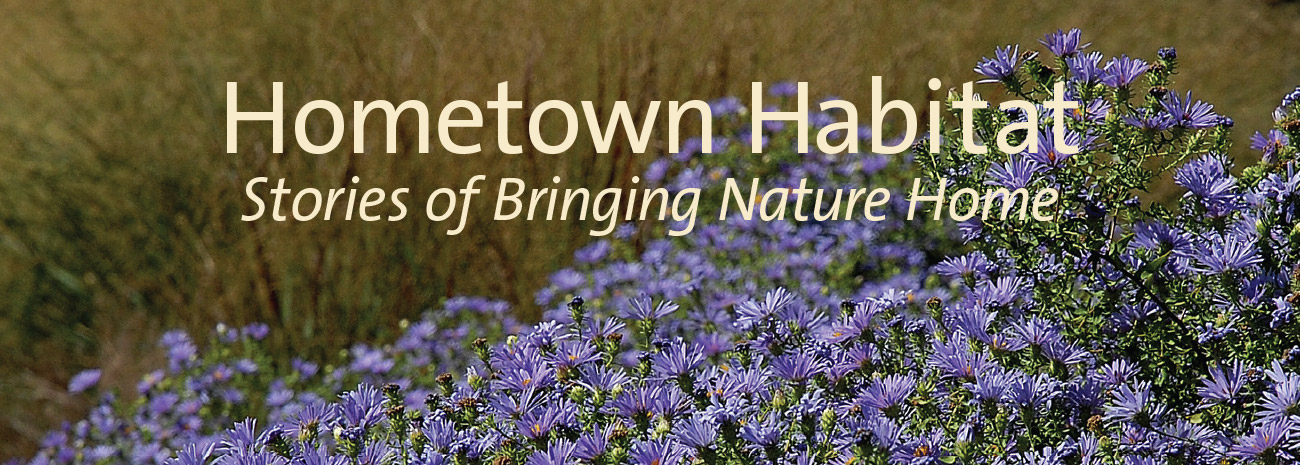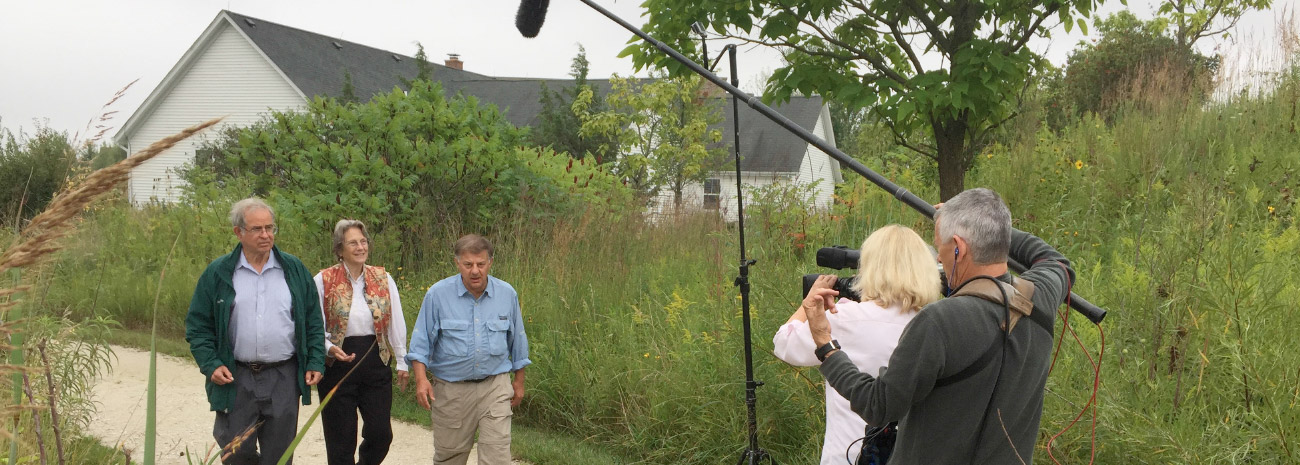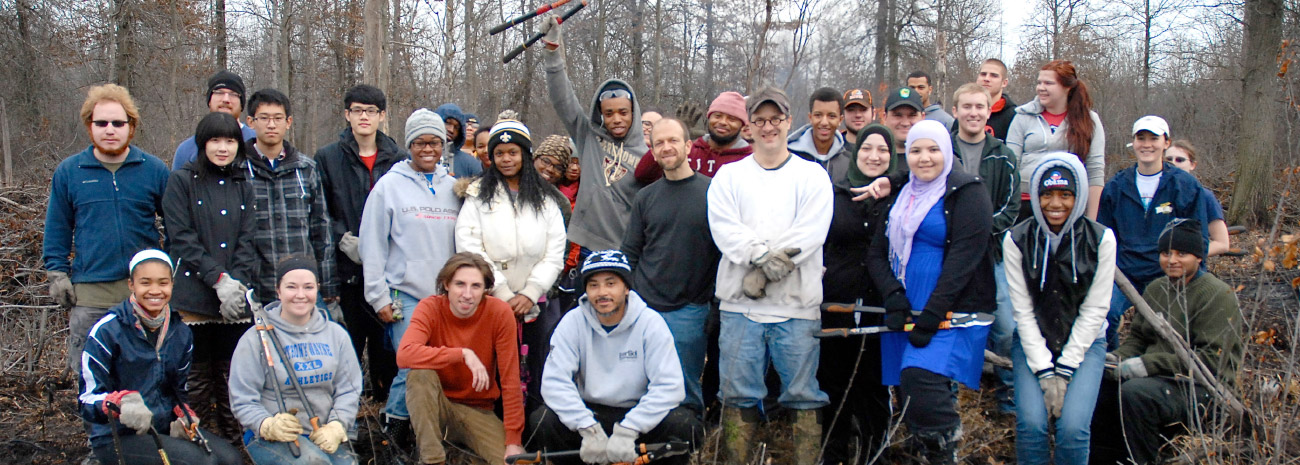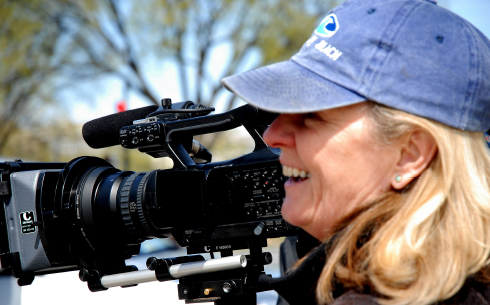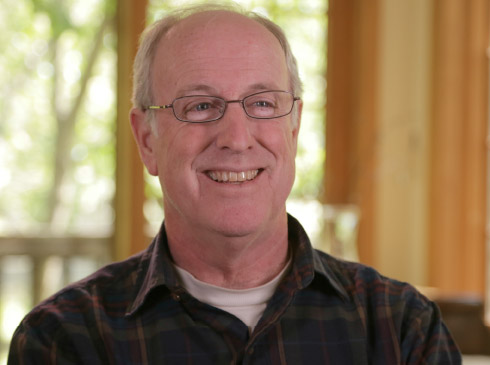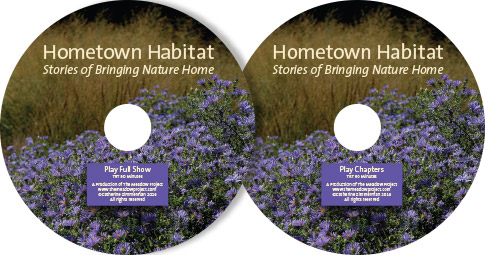Award winning director, Catherine Zimmerman, and film crew traveled across the country to visit Hometown Habitat heroes, who are reversing detrimental impacts on the land and in the water of major U.S. watersheds, one garden at a time. They wound their way through the watersheds of Florida, the prairies of the Mississippi River Basin, the streams and rivers of the Rocky Mountains, the Chesapeake Bay, the Great Lakes and Columbia River to share success stories and works-in-progress that celebrate conservation landscaping that re-awakens and redefines our relationship with Nature.
Along with the everyday habitat heroes, Catherine and crew introduce us to ecologists, entomologists and other experts who share the science behind how today’s ‘native-plants-know- best’ enthusiasts, landscape architects and conservation groups are helping 20th century-minded city planners, businesses and developers appreciate the myriad 21st century benefits of low-maintenance, seasonally-dynamic and eco-healthy landscapes.
The stories they traveled to tell touch on all aspects of the benefits of native plants and brings to light a sense of community that makes conservation landscaping possible. These are the stories.
Douglas Tallamy, PhD, Entomologist, teacher, author and environmental activist. Tallamy leads the charge to inform and inspire audiences all over the country as he eloquently speaks about diversity and the critical, ecological connections between native insects and native plants. This is a very inspiring and informative segment which provides the framework for the documentary.
Million Trees NYC ( Ecosystem Services) It all started with studies that showed that the population of New York City would swell to one million more people by 2030. The Bloomberg administration took a very progressive, science based approach to the issue and created PlaNYC a sustainability and resiliency blueprint for New York City. The Million TreesNYC campaign was just one of the 127 initiatives launched by PlaNYC to keep pace with the population projection. Hometown Habitat focuses in on the partnerships formed and the habitat heroes that make planting one million trees in ten years feasible.
Be A Habitat Hero Program (Water conservation) Teaching about restoring habitats with little water resources, in the Colorado water basin, is the mission of Susan Tweit and Connie Holsinger (founder). We follow their lengthy treks and efforts to set up workshops with water districts and citizens, giving hands on experience to “wildscape” yards to “grow a network of habitat for songbirds and pollinators across the Rocky Mountain region and beyond, and restore the joy of seeing nature every day in the places where we live, work and play.”
Eco-artists, South Florida (Environmental Art Solutions) Artists are finding ways to use their art to help solve environmental problems in their hometowns. We follow two, unique artists as they identify eco-issues, collaborate with experts to solve the issue, and involve the community in the eco-art solution.
Sustainable Practices (Redefining the Horticulture Industry) The Chesapeake watershed is one of the largest estuaries in the country with major pollution from cities, agriculture and dense development. We look at the role the horticulture community can play in helping to educate homeowners about conservation landscapes. The Chesapeake Conservation Landscaping Council is developing a Bay wide certification program to re-educate designers & installers with the goal of growing the numbers of consistently trained and certified conservation landscape professionals.
Steven Apfelbaum (Restoration and Conservation Development) “Once we recognize the important ecological roles that plants play, we can incorporate those roles into existing developments or new developments. We can design them so they are functional ecosystems. And we are beginning to do this”. Doug Tallamy. Since the 70’s, ecologist Steve Apfelbaum has been doing just that. We visit Prairie Crossing, a collaboration between developers George and Vicky Ranney and Steve Apfelbaum, which turns the development paradigm upside down. Instead of “planting” 600 acres of houses, half of the acreage is devoted to native, prairie habitat, which manages storm water and provides people with daily access to nature.
Sacred Grounds (Interfaith Environmental Movement) An initiative of the Garden for Wildlife program of the National Wildlife Federation, that taps into the natural partnership between religion and the notion that we should preserve “God’s Green Earth”. Sacred Grounds opens on planting day at Adat Shalom in Bethesda, Maryland., where Rabbi Fred Scherlinder Dobb explains to the congregant volunteers, “We are re-wilding. You are the hands. We are turning this land back to what it once was, can and should be. Just imagine the pollinators, in decline, and the songbirds who can have breakfast by the mosques, lunch at the synagogue, 4pm tea at the gudjwara and dinner at the church because we connect sacred grounds and create islands of sustainability, because we are people of faith.”
Wild Ones (Grass roots, service based, environmental activism). Hometown Habitat visits two Wild Ones chapters in the Great Lakes watershed. Green Bay, Wild Ones activist, Ned Dorff, is a teacher, husband, father, city council activist and naturalist. Ned represents an up and coming crowd of young people actively and politically engaged in making environmental change, for the better, in their hometowns. Todd Crail, Oak Openings Wild Ones founder in Toledo, is an environmental science lecturer, for University of Toledo. Crail advocates with UT for a service based learning experience, where his students are fully engaged in actively solving environmental, community issues.
Catherine Zimmerman, Producer/Director, author and sustainable landscape designer.
Douglas Tallamy, PhD, Entomologist, teacher, author and environmental activist.
WATCH THE TRAILER

